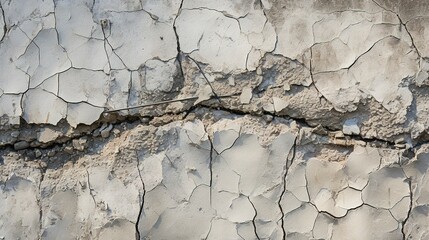Commercial roof repair is essential for maintaining a safe and efficient building. Over time, exposure to harsh weather and environmental factors causes damage. Ignoring minor issues leads to costly repairs. Timely intervention prevents long-term structural problems.
Identifying the signs of roof damage is the first step in effective repair. Water stains on ceilings, pooling water, and visible cracks signal trouble. Damaged flashing and loose seams allow moisture infiltration. Early detection minimizes the risk of widespread damage. Visit https://sidinginstallationlongisland.com/ to learn more.
Roof leaks are one of the most common issues in commercial buildings. Leaks often originate from poorly sealed seams or punctured membranes. Even small leaks lead to mold growth and weakened insulation. Repairing leaks promptly prevents further complications.
Flat roofs are especially vulnerable to water pooling. Improper drainage causes standing water, which increases pressure on the roofing material. Over time, this leads to cracks and surface deterioration. Adjusting drainage systems resolves pooling issues.
Membrane damage requires immediate attention. Tears, punctures, and shrinkage compromise the roof’s integrity. UV exposure accelerates membrane breakdown. Reinforcement and resealing restore protective properties.
Flashing protects the roof’s edges and penetrations. Damaged or improperly installed flashing allows water entry. Corrosion weakens flashing over time. Replacing or sealing flashing strengthens the roof’s defenses.
Roof coatings enhance protection against weather damage. Reflective coatings reduce heat absorption and energy costs. Elastomeric coatings fill cracks and provide flexibility. Recoating extends the lifespan of the existing roof.
Thermal expansion and contraction cause stress on roofing materials. Temperature fluctuations lead to cracking and seam separation. Flexible roofing materials accommodate movement. Proper installation minimizes expansion-related damage.
Storm damage weakens roofing systems. High winds lift shingles and damage fasteners. Hail causes dents and punctures in the roofing surface. Post-storm inspections identify and address hidden issues.
Ventilation systems play a crucial role in roof health. Poor ventilation causes heat and moisture buildup. This leads to mold growth and material deterioration. Installing balanced ventilation prevents internal damage.
Roof insulation impacts both energy efficiency and durability. Wet or compressed insulation loses effectiveness. Damaged insulation increases heating and cooling costs. Replacing insulation restores thermal performance.
Roof penetrations like vents, HVAC units, and skylights create weak points. Improper sealing around these areas leads to leaks. Regular inspections identify compromised seals. Resealing prevents water entry and damage.
Fire damage weakens roofing materials. Burnt or melted areas reduce structural integrity. Replacing damaged sections restores safety. Fire-resistant coatings add an extra layer of protection.
Ponding water accelerates roof deterioration. Overloaded drainage systems contribute to pooling. Adjusting slope and installing additional drains prevent standing water. Improved drainage reduces pressure on the roofing system.
Seam separation is a common issue with membrane roofs. Poor adhesive application or thermal stress causes separation. Resealing and reinforcing seams improve water resistance. Professional application ensures long-lasting results.
Roof blistering occurs due to trapped moisture or poor adhesion. Blisters weaken the roofing surface and create entry points for water. Removing blisters and repairing the substrate prevents further damage. Proper ventilation reduces the risk of blistering.
Structural damage from heavy snow or debris impacts roof performance. Excess weight strains support structures and materials. Removing snow and clearing debris reduces load stress. Strengthening support systems increases load capacity.
Moss and algae growth damage roofing materials. Organic growth traps moisture and accelerates material breakdown. Cleaning and applying protective treatments prevent regrowth. Treated surfaces resist future infestations.
Roof expansion joints accommodate building movement. Damaged or worn joints allow water penetration. Repairing or replacing expansion joints restores flexibility. Well-maintained joints prevent cracking and tearing.
Solar panels and rooftop equipment increase roof load. Improper installation causes punctures and surface stress. Securing equipment and reinforcing support structures prevent material damage. Balanced load distribution improves roof stability.
Wind uplift damages roofing materials and fastening systems. Loose shingles and panels create entry points for water. Reinforcing fasteners and sealing edges prevent uplift. Secure installation protects against wind damage.
Age-related wear and tear compromise roof performance. Material breakdown and UV exposure reduce waterproofing capacity. Replacing aged materials restores protective function. Scheduled maintenance extends roof longevity.
Ice dams form when snow melts and refreezes at roof edges. Ice blocks drainage and causes water to back up under shingles. Installing heat cables and improving insulation prevent ice dams. Proper drainage systems reduce freezing risks.
Root penetration from overhanging trees causes roofing damage. Tree roots seek moisture and penetrate weak spots. Trimming branches and reinforcing roofing material prevent intrusion. Removing nearby trees reduces the risk of root damage.
Cracking and splitting occur due to material shrinkage and stress. Temperature changes and structural movement increase cracking risks. Repairing cracks with flexible sealants restores waterproofing. Reinforcing weak points prevents future splitting.
Roof decking damage weakens structural integrity. Water infiltration and rot compromise the decking. Replacing damaged sections restores strength. Protective underlayment prevents future decking damage.
HVAC unit vibrations stress roofing materials. Loose fasteners and poor insulation increase vibration-related damage. Installing vibration dampers and reinforcing insulation reduce stress. Balanced support prevents long-term damage.
Oil and chemical exposure deteriorate roofing materials. Industrial emissions and runoff corrode surfaces. Applying resistant coatings protects against chemical damage. Regular cleaning minimizes corrosive buildup.
UV degradation weakens roofing membranes. Prolonged exposure causes fading and material breakdown. UV-resistant coatings reduce sun damage. Reflective materials improve longevity and performance.
Drainage system blockages increase water retention. Clogged gutters and downspouts cause overflow and pooling. Clearing debris and installing gutter guards improve flow. Well-maintained drainage reduces water damage.
Improper roof installation leads to early failure. Poor seam alignment and inadequate sealing create vulnerabilities. Professional installation ensures correct material placement. High-quality work increases roof longevity.
Heavy foot traffic damages roofing surfaces. Maintenance crews and equipment create wear patterns. Protective walkways and reinforced materials reduce surface stress. Controlled access preserves roof condition.
Emergency repairs prevent further damage. Temporary sealing and patching protect against water infiltration. Fast response minimizes structural impact. Immediate action prevents costly long-term repairs.
Preventative maintenance reduces repair frequency. Scheduled inspections and minor repairs address early signs of wear. Cleaning and resealing protect against environmental damage. Proactive care extends the roof’s lifespan.
Poor attic insulation impacts roof health. Inadequate insulation allows heat and moisture buildup. Replacing or upgrading insulation improves energy efficiency. Balanced insulation reduces internal temperature stress.
Storm-resistant materials increase durability. Impact-rated shingles and reinforced membranes withstand extreme weather. Installing secure fasteners reduces wind uplift. Resilient materials improve overall protection.
Roof age determines repair strategy. Older roofs require more frequent inspection and maintenance. Replacing outdated materials improves performance. Lifespan extension depends on consistent care.
Insurance coverage affects repair decisions. Some policies cover weather-related damage and material failure. Understanding coverage limits reduces out-of-pocket costs. Documentation supports successful claims.
Moisture infiltration weakens roof structure. Trapped water causes rot and mold growth. Identifying and sealing entry points prevents moisture buildup. Proper ventilation reduces humidity levels.
Roof slope influences drainage efficiency. Low slopes increase pooling and water retention risks. Adjusting slope and adding drainage channels improve flow. Balanced slope design reduces structural stress.
Roof repair enhances energy efficiency. Sealed seams and improved insulation reduce heat loss. Reflective coatings minimize cooling demands. Enhanced efficiency lowers operational costs.
Commercial roof repair requires expert knowledge and precision. Proper material selection and professional installation improve durability. Consistent maintenance prevents early failure. A well-maintained roof protects the building and extends its lifespan.



